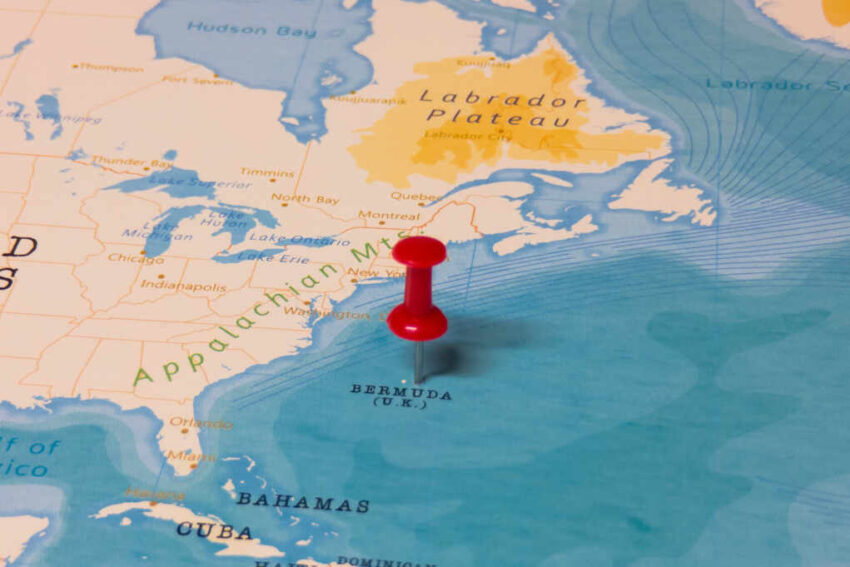A new wave of scientific consensus has shattered decades of supernatural speculation about the Bermuda Triangle, exposing how myth can flourish when facts are ignored and common sense is sidelined.
Story Highlights
- Recent scientific analysis definitively debunks Bermuda Triangle myths, attributing disappearances to natural causes and human error.
- Advanced monitoring technologies now provide real-time safety for ships and aircraft in the region.
- Insurance and maritime industries confirm no unusual risk, undermining decades of sensational media narratives.
- Experts urge Americans to challenge fear-mongering and demand evidence-based explanations in public policy and media.
Scientific Data Dispels Bermuda Triangle Myths
In recent years, scientists such as Karl Kruszelnicki, supported by oceanographic research and data from the National Oceanic and Atmospheric Administration (NOAA), have explained Bermuda Triangle incidents through known factors such as hazardous weather, navigational errors, and heavy traffic. Australian scientist Karl Kruszelnicki, with support from international oceanographers and the National Oceanic and Atmospheric Administration (NOAA), demonstrated that incident rates in the Triangle match those of other busy maritime zones. Insurance giant Lloyd’s of London confirmed no statistical anomaly, refuting claims of supernatural danger that have dominated popular culture since Flight 19 vanished in 1945.
This decisive shift comes after decades of speculation fueled by sensational media coverage and conspiracy theorists. The region’s reputation as a mysterious vortex was built on isolated incidents, despite the area’s heavy traffic, unpredictable weather, and hazardous geography. Over 50 ships and 20 planes disappeared in the Triangle during the last century, but data reveals similar patterns in other oceanic regions. Today, scientists emphasize the importance of rational analysis, warning against the dangers of myth-driven policy and fear-mongering.
Technological Advances: Real-Time Safety and Monitoring
Advances in satellite monitoring, GPS navigation, and real-time weather alert systems have improved maritime and aviation safety in the region. Ships and aircraft now receive real-time warnings for microbursts, rogue waves, and magnetic anomalies, dramatically reducing accident rates. The adoption of advanced safety grids eliminates reliance on outdated search-and-rescue protocols, aligning maritime safety with America’s tradition of innovation and technological leadership. This progress highlights how evidence-based solutions can replace sensational narratives and restore public trust in scientific expertise.
Documentaries and news outlets have begun to pivot from supernatural explanations to scientific consensus, educating the public about the real risks and encouraging a more informed approach to maritime safety. As experts like Simon Boxall explain, rogue waves and sudden weather shifts account for the region’s most dramatic incidents, not mysterious forces. Insurance companies have updated their risk models, leading to lower premiums and improved logistics for shipping companies—a direct benefit for American industry and consumers.
Impact: Industry, Public Perception, and Conservative Values
Maritime and aviation sectors are experiencing increased demand for safety technology, while insurance markets adjust to new data-driven standards. The story’s broader significance lies in its challenge to sensationalism and fear-based policy—an approach that has too often characterized leftist agendas in media and government. By prioritizing facts over fiction, regulators and industry leaders are setting a precedent for evidence-based decision-making that aligns with conservative values of accountability, transparency, and common sense.
Public perception is shifting as Americans see the benefits of technological innovation and scientific rigor. The move away from supernatural explanations marks a cultural victory for those who champion reason over rumor. As conspiracy theorists and sensationalists are increasingly marginalized, the Bermuda Triangle case serves as a reminder: vigilance against misinformation, government overreach, and myth-driven narratives remains vital in protecting constitutional principles and family values.
Expert Perspectives Underscore Rational Analysis
Industry experts agree that the Bermuda Triangle’s dangers have been overstated by decades of mythmaking. Kruszelnicki and NOAA stress that disappearances are the result of predictable factors—traffic volume, weather, human error—not paranormal phenomena. Peer-reviewed studies and official statements reinforce the shift toward rational analysis, with insurance markets and regulators relying on evidence rather than speculation. This consensus delivers a powerful lesson: Americans must scrutinize public narratives and demand policy grounded in verifiable facts, not sensational rhetoric.
While some conspiracy theorists persist, their influence is waning as credible data prevails. The Bermuda Triangle’s transformation from myth to manageable risk illustrates the importance of skepticism and critical thinking—values essential for defending liberty and resisting agendas that undermine American traditions. In an era marked by rapid technological change, citizens must remain alert to any attempt to erode truth, inflate threats, or distract from genuine issues facing the nation.
Sources:
Bermuda Triangle Mystery: Myth and the Science That Sank It
Bermuda Triangle Mystery Solved: Science and Geography
One Scientist Thinks He’s Finally Solved the Bermuda Triangle Mystery
Is the Bermuda Triangle Mystery Solved?
Click this link for the original source of this article.
Author: Editor
This content is courtesy of, and owned and copyrighted by, https://republicanpost.net and its author. This content is made available by use of the public RSS feed offered by the host site and is used for educational purposes only. If you are the author or represent the host site and would like this content removed now and in the future, please contact USSANews.com using the email address in the Contact page found in the website menu.





